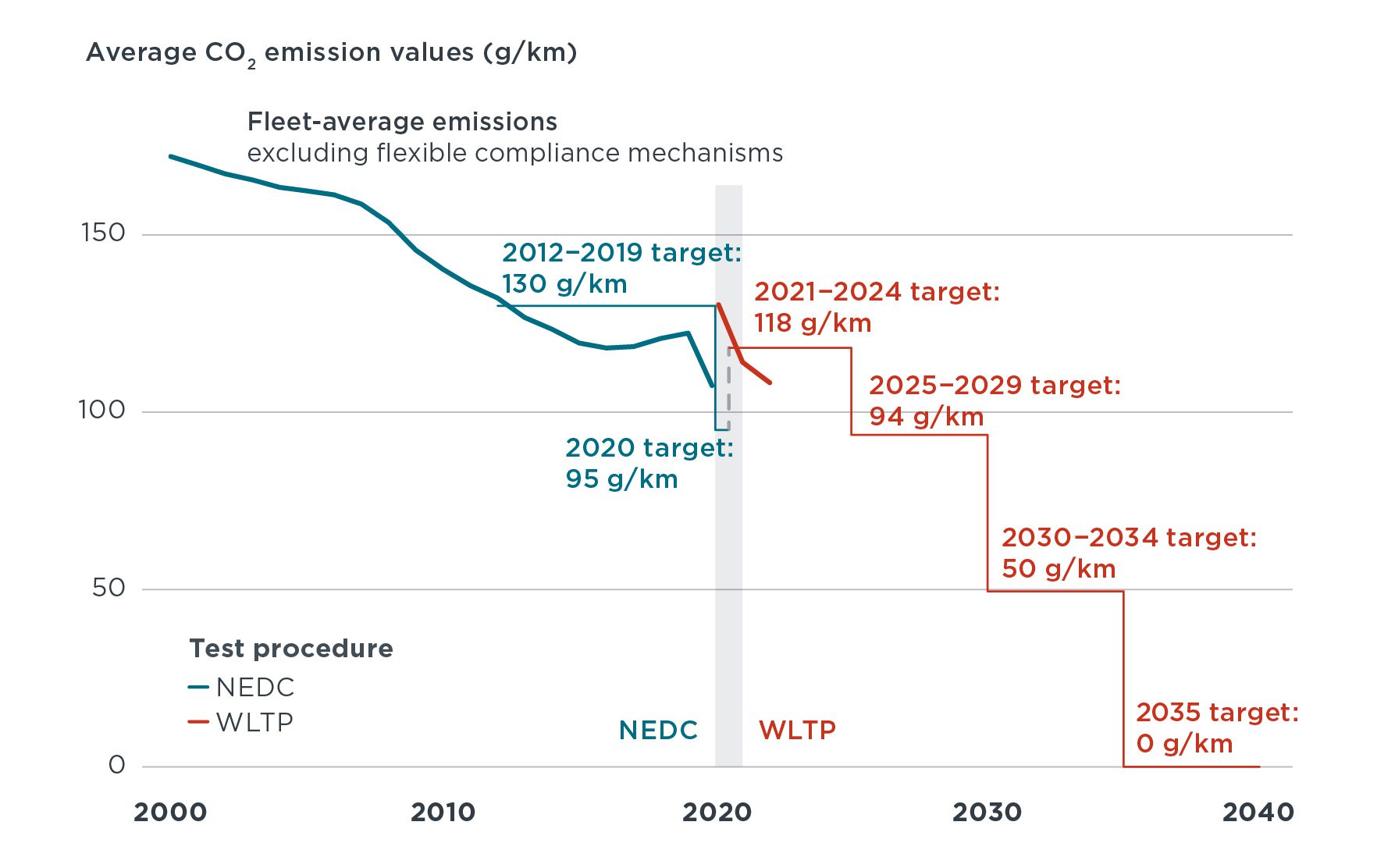On the way to ‘real-world’ CO2 values? The European passenger car market after 5 years of WLTP
Briefing
CO2 emissions from new passenger cars in Europe: Car manufacturers’ performance in 2022
This briefing paper provides an overview of official CO2 emission levels of new passenger cars in the European Union (EU) in 2022, based on a preliminary dataset released by the European Environment Agency (EEA). The analysis indicates that fleet average CO2 emissions from new passenger cars decreased by 6 g/km (-5.1%) from 114 g/km in 2021 to 108 g/km in 2022. Based on our analysis, all manufacturers met their 2022 CO2 targets.
The EU introduced the first CO2 standards in 2009. This legislation sets CO2 emission reduction targets for manufacturers on new cars and vans. Figure 1 illustrates the historical average of emissions values and targets.

Figure 1. Historical average CO2 emission values and targets of new passenger cars without flexible compliance mechanisms under the New European Driving Cycle (NEDC) test procedure and the subsequent Worldwide harmonized Light vehicles Test Procedure (WLTP). The 2021–2024 line corresponds to the WLTP-specific emissions reference target for 2021, calculated as the average of the WLTP-specific emissions reference targets of all manufacturers.
From 2000 to 2007, before the standards were in place, fleet CO2 emissions declined by 1.9 g/km per year on average. From 2008, manufacturers outperformed the annual reduction rates required to meet the 2015 target of 130 g/km. However, without more stringent targets before 2020, the trend was reversed and average CO2 emissions increased by 0.7 g/km per year over the next four years. Only in 2020 did the new target lead to a steep decline of 14 g/km compared to 2019. The decline continued over the next two years, but not at the same rate: the 6 g/km CO2 reduction from 2021 to 2022 was less than half the reduction from 2020 to 2021.
As an update to 2021’s briefing, this paper details the manufacturer’s 2022 CO2 emissions performance and presents the market share of fuel types and powertrain technologies by manufacturer and EU Member State. It also discusses flexible compliance mechanisms.
Of the 9.48 million new passenger cars represented in the 2022 preliminary EEA dataset, more than one million were electric vehicles. Manufacturers relied primarily on battery electric and plug-in hybrid electric vehicles to meet their targets, with CO2 emissions of combustion engine vehicles, mild hybrid vehicles, and full hybrid vehicles remaining, on average, at the same level.
